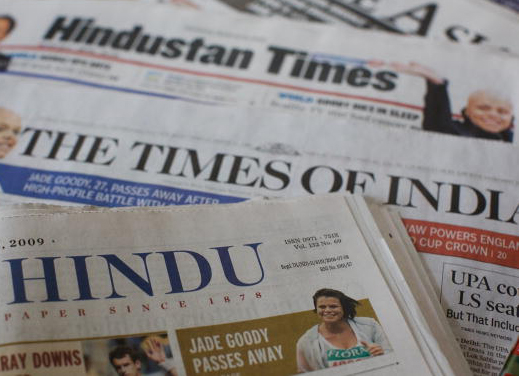
Commerce ministry demands easing of gold import norms
Seeking to push exports, the commerce ministry has asked the finance ministry to ease restrictions on import of gold, imposed by RBI. In a letter to economic affairs secretary Arvind Mayaram, commerce secretary SR Rao has asked him to “look into the matter (gold imports by exporters) and issue necessary instructions to RBI for removal of the anomaly. “The department is repeatedly receiving representations from stakeholders in the matter and our exports are suffering,” Rao said in the letter. In order to check a rising current account deficit (CAD), RBI had in August imposed curbs on import of gold and also laid down various pre-conditions for inward shipment of the precious metal. Rao also pointed out that as the “Foreign Trade Policy (FTP) does not prohibit exporting first and then importing (for replenishment), the prohibition imputed by the Department of revenue based on the RBI circular does not appear to be in order”. Gems and jewellery sector, which is a major consumer of imported gold, account for about 15% of India’a total exports.
(Source: Financial Express)
Inflation may ease to 6.5% in December: Rangarajan
A fall in vegetable prices is likely to ease headline inflation and retail inflation to 6.5% and 9.20%, respectively, in December, Prime Minister’s Economic Advisory Council (PMEAC) chairman C Rangarajan said on Sunday. Some of the things that have really pushed up inflation are vegetables like onion prices, which have crashed in December. Therefore when December number comes in mid January, we will see retail inflation coming down by 2-2.5% from the current level of 11% or so. There could be a decline in wholesale price index could be the order of 1%.Wholesale price-based inflation (WPI) accelerated to 14- month high of 7.52% in November, while retail inflation quickened to eight-month high of 11.24% in the month. Rangarajan said the declining trend in inflation will continue and WPI may ease to 6.5% by March-end.
(Source: Financial Express)
India Inc profitability at five-year low
Indian companies are struggling to maintain their profitability as rising debt levels and slackening growth begin to take a toll. The return on total capital – a key tool to measure how profitable a company has been on its invested capital – has been steadily deteriorating over five years. It is down from an average of 29 per cent in 2007-08 to 20.5 per cent in FY13 for a sample of 142 of the BSE 200 companies (excluding banks and financial entities). Analysts say the return on capital employed (RoCE) is among the preferred tools to measure how efficiently a company uses its financial resources. This ratio deteriorates if a company takes on large debt or is not able to increase its profits commensurately. Indian companies were enjoying a higher return on capital till 2009 because the economic cycle was on an upswing. But the Lehman crisis in 2008 put a spanner in the growth wheels and return ratios began to deteriorate. The economic situation notwithstanding, some companies have managed to increase their returns on capital considerably over the past five years. Among those with the highest increase are companies with little or no debt and where the profits have been rising. Indian companies that have consistently kept their returns on capital higher than 30 per cent have seen an increase in market values by around 89 per cent in the past five years. Companies with an average return on capital of 15-30 per cent have seen an increase of 38 per cent in market values.
(Source: Business Standard)
Exports weather global slowdown, to do better in 2014
Having seen ups and downs during the year, India's exports are expected to register a healthy growth during 2014 on account of improvement in the US, Europe and Asean region markets. The country's merchandise shipments, which were mostly in negative zone during the first half due to the global slowdown, started posting healthy growth during second half. From July, the exports grew in double digits and in fact registered a two-year high growth in October (13.47 per cent). However, the growth rate moderated to 5.9 per cent in November. A widening trade gap directly impacts current account deficit (CAD) and the rupee. The CAD touched a historic high of 4.8 per cent of GDP in 2012-13 and this was mainly attributed to high imports of gold and petroleum products. A high level of CAD puts pressure on the rupee, which has depreciated by about 15 per cent since April 30. Seeking to boost exports which slipped 1.76 per cent in 2012-13, the government had unveiled a slew of incentives for exporters and a package to revive special economic zones (SEZs). These zones account for 30 per cent of total exports.
(Source: Economic Times)
Economic Section
Royal Thai Embassy















